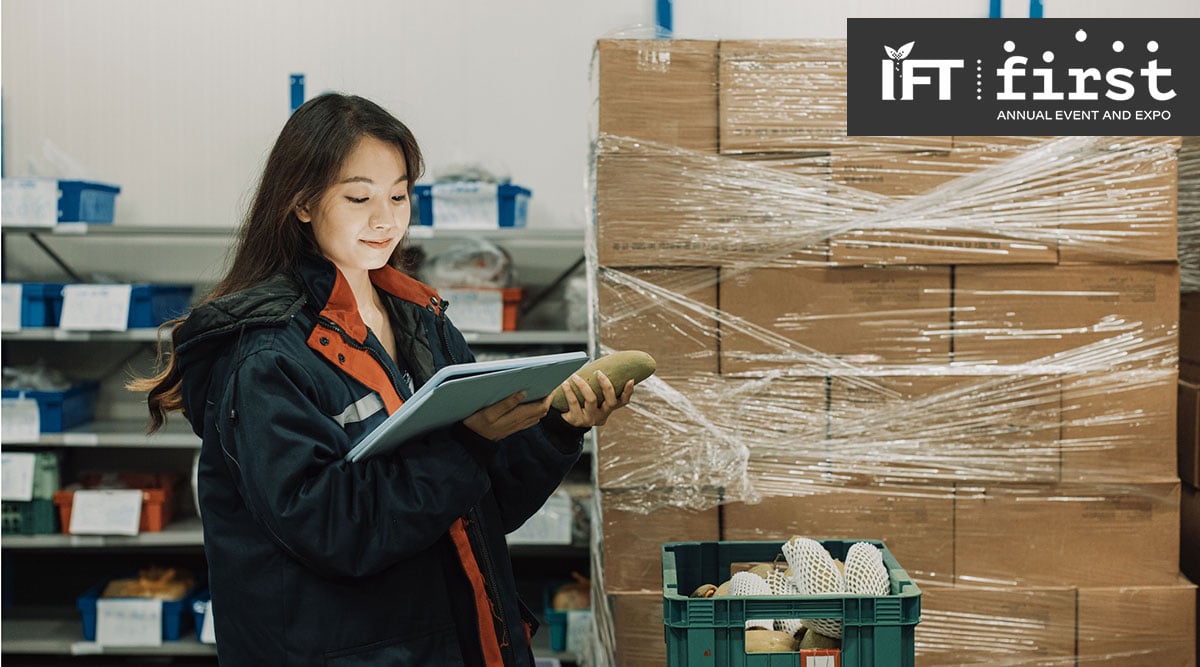Navigating the Ins and Outs of Supply Chains
Business FIRST panelists share strategies for learning from crisis situations and strengthening supply chain management.
 Managing a supply chain isn’t an easy task under the best of circumstances, and the past few years have been anything but that thanks to the perfect storm of challenges created by the COVID-19 pandemic, the war in Ukraine, civil unrest, and a troubled economic climate. So on Tuesday, professionals from the supply chain world gathered on the Business FIRST stage to discuss what they’ve learned over the past several years, and how those learnings can be applied to enable better supply chain efficiencies.
Managing a supply chain isn’t an easy task under the best of circumstances, and the past few years have been anything but that thanks to the perfect storm of challenges created by the COVID-19 pandemic, the war in Ukraine, civil unrest, and a troubled economic climate. So on Tuesday, professionals from the supply chain world gathered on the Business FIRST stage to discuss what they’ve learned over the past several years, and how those learnings can be applied to enable better supply chain efficiencies.
“Being in supply chain is not for the faint of heart,” Tracy Joshua, vice president, external supply chain operations at the Kellogg Company, observed wryly. “Really, if you think about it, in supply chains, there’s disruption all the time.”
The pandemic exposed vulnerabilities in the supply chain, she said. “I think one of the faulty things in supply chain is that we don’t look at it holistically,” said Joshua. “You really need systems thinking and thinking about the supply chain from end to end, starting up front—R&D, innovation, engineering, then procurement, and quality all through that process. But then in the execution, looking around corners to see where there are potential gaps that either exist today or will exist in the future. And so really a callout to me is that systems thinking—that ecosystem to understand both upstream and downstream—[is needed].”
The pandemic underscored the importance of sourcing ingredients from multiple suppliers in different geographic locations, said Ian Blount, who cofounded a company called Coalescence, a manufacturer of custom seasonings, flavors, and nutritional premixes, with his wife and fellow panelist Angela Cauley. It also reinforced the importance of strong cash management, Blount said, noting that “COVID exposed a lot of poor cash management.”
Some positives emerged from the pandemic, Blount and Cauley agreed. Cauley pointed out that it created opportunities for smaller and minority-owned businesses that were able to step up and fill in supply chain gaps. “It leveled the playing field where race became secondary to need,” Cauley reflected, drawing a round of applause from the audience.
Willette Crawford, director of the Center for Food Safety and Health, 1890 Research & Extension at South Carolina State University, noted that the COVID-19 pandemic “required us to step back and be more flexible.” For Crawford, that included everything from virtual visits to help qualify new vendors to using drones to conduct risk assessments of produce crops.
Crawford echoed Joshua’s comments about the challenging nature of the supply chain discipline. “There’s never an easy day in supply chain,” she said. “There’s never a predictable day, so we always have to be able to pivot.”
Leveraging cloud-based systems effectively is an increasingly important tool, Crawford said, noting that it facilitates the process of managing multiple locations and working with people scattered around the globe. “Using cloud-based systems allows everyone to work from a single source of truth … It allows you to ensure the timeliness of that information and to better coordinate it,” Crawford said.
The “Navigating Supply Chain Failures” panel discussion was moderated by Food Technology Science and Technology Editor Julie Larson Bricher and included an introduction to the topic by Larry Keener, president and CEO of International Product Safety Consultants.
Food Technology Articles

How to Achieve EPR-Forward Packaging, Part 2
In this two-part series, the author explores the history of Extended Producer Responsibility (EPR), what is needed to help EPR succeed, and how brands can best prepare for EPR.

How to Achieve EPR-Forward Packaging
In this two-part series, the author explores the history of Extended Producer Responsibility (EPR), what is needed to help EPR succeed, and how brands can best prepare for EPR.

Keeping the ESG Promise
An infographic describing food and beverage companies’ outlooks regarding ESG initiatives.

Gulfood conference highlights technology solutions to regional, global food problems
An overview of insights shared at the 2024 Gulfood Inspire conference in Dubai.

Is Phenology the Missing Link in a Climate Resilient Food System
The authors describe how phenology—the impact of weather on plant growth cycles—threatens to destabilize the food supply chain and argue that this area of study should be actively considered by food scientists.
Recent Brain Food

Reflections and Considerations in the Wake of COVID-19
IFT’s Chief Science and Technology Officer Maria Velissariou, PhD, reflects on the impact of COVID-19 on the global food supply chain, consumer behavior, and food security, and challenges science of food professionals to consider some tough questions as they redefine the path forward.


